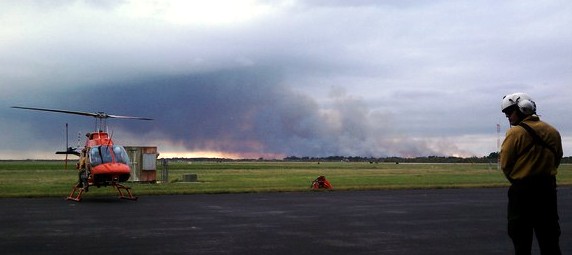The National Transportation Safety Board is going to hold a public board meeting with only one thing on the agenda, the August 5, 2008 crash of the helicopter on the Iron Complex fire in northern California that killed nine firefighters. Their announcement about the meeting is HERE.
The meeting will be Tuesday, December 7, at 9:30 a.m., in the NTSB Board Room and Conference Center, 429 L’Enfant Plaza, S.W., Washington, D.C. A live and archived webcast of the proceedings will be available on the Board’s website at www.ntsb.gov.
The NTSB has already issued a “factual report” on the crash. We covered that HERE. The Sikorsky S-61N crashed on takeoff from a remote helispot in the Shasta-Trinity National Forest near Weaverville, California. The NTSB suggested in the factual report that Carson Helicopters understated the weight of its aircraft and kept spotty maintenance records; the company’s contract with the USFS was terminated following the accident.
The NTSB estimated that the actual empty weight of the helicopter was 13,845 pounds, while Carson Helicopters stated in their contract proposal that the weight was 12,013 pounds. For the purpose of load calculations on the day of the crash, the pilot assumed the weight to be 12,408 pounds, which was 1,437 pounds less than the actual weight estimated by the NTSB.
Killed in the crash were pilot Roark Schwanenberg, 54; pilot Jim Ramage, 63; Shawn Blazer, 30; Scott Charlson, 25; Matthew Hammer, 23; Edrik Gomez, 19; Bryan Rich, 29; David Steele, 19; and Steven “Caleb” Renno, 21. The Wildland Firefighter Foundation has a tribute page online [HERE].






